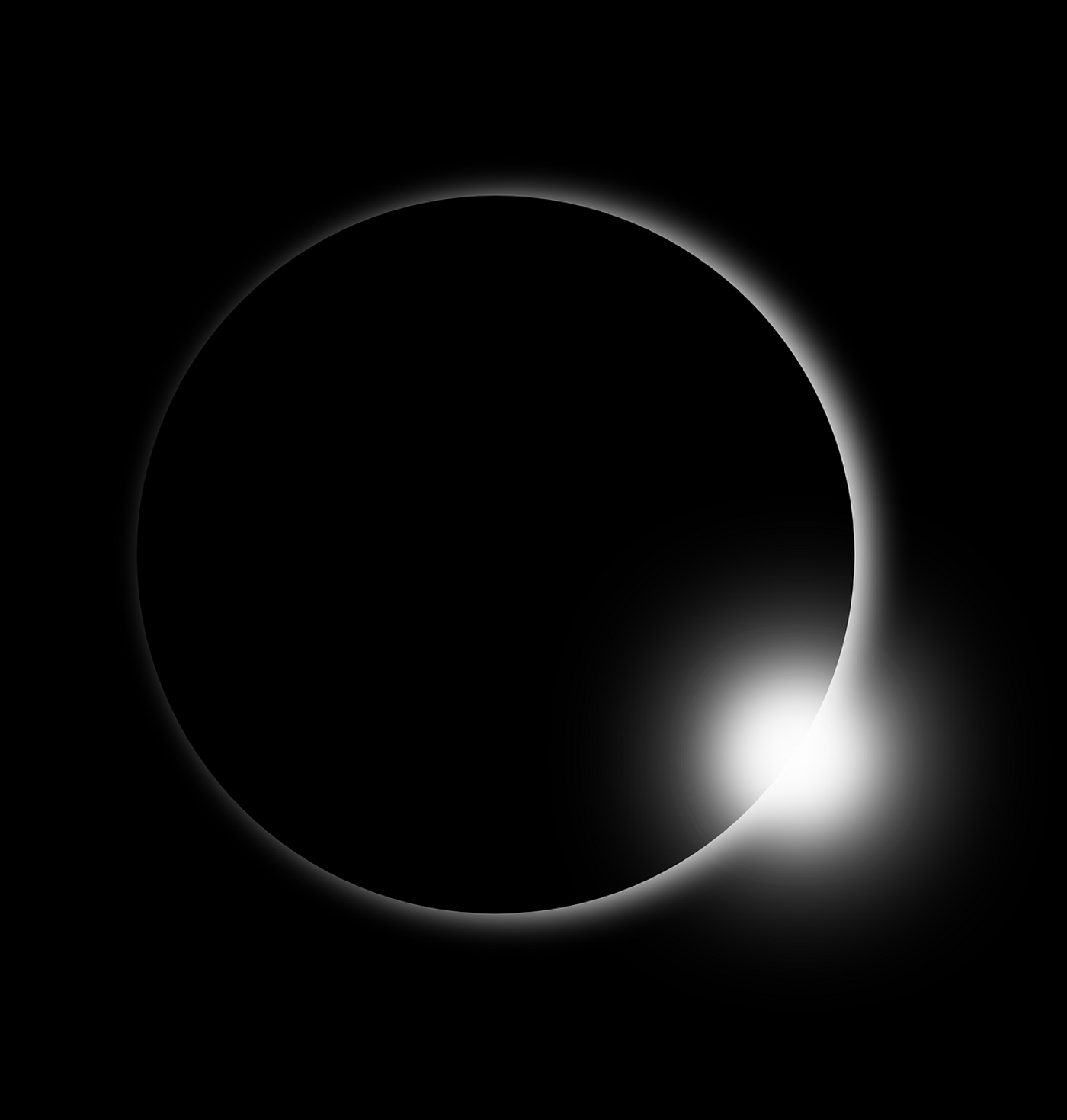How to Watch the Solar Eclipse
Millions across the United States will see the total solar eclipse on Monday, an event that hasn’t occurred here since 1979. While it's sure to be an exciting experience, it's still imperative to practice safety.
Image Credit: OpenClipart-Vectors/Pixabay
Many have prepared by purchasing ISO-certified solar eclipse glasses from local convenience stores, but other last-minute shoppers are still scrambling to find a pair as the last-minute stocks quickly fly off the shelves.
If you’re unlucky and can't find a pair near you, then you should be happy to hear that alternatives do exist. We’ll discuss some with you in this piece so you can prevent the Sun from damaging your precious eyesight.
For those who can't make it outside today because of work or other obligations, a live stream of the eclipse can be viewed as it happens below:
Related: Where will you be for the solar eclipse?
Assuming you can make it outside, and you just don't have any solar eclipse glasses to go along with the experience, here are some alternative ways you can view it without hurting your eyes:
Use Shade-14 Welding Glass
If you or someone in your family is a welder, then you might be in luck. Welders need helmets with darkened glass infused into them to prevent the incredibly bright welding arc from blinding them.
NASA says shade-14 welding glass will work and is dark enough for solar eclipse viewing. It doesn’t matter if you’re wearing a welding helmet with shade-14 glass installed in it or just holding a piece of raw shade-14 welding glass up with your arm.
Unfortunately, many welders choose lighter glass shades for their work to make viewing their welding job easier. Consequently, shade-14 welding glass is harder to find than others.
NASA admits that some consider shade-14 welding glass too dark for solar eclipse viewing. Despite that caveat, you shouldn’t use anything apart from shade-14 because it will be too light and won't provide adequate protection, resulting in permanent eye damage.
Use a Pinhole Camera
No welding materials available? If you’re crafty, you can also make a pinhole camera to view the solar eclipse without frying your eyeballs out of their sockets. It's an inexpensive method and utilizes standard household supplies that almost everyone has at their disposal.
The University of Central Florida recommends using the following materials:
- A cereal box
- A piece of aluminum foil
- A sheet of white printer paper
- A pair of scissors
- A sewing needle
- A pencil
- Scotch tape
Once you have everything, trace and cut out the rectangular-shaped piece of paper to tape inside the bottom of the cereal box.
Next, cut two one-inch holes on either side at the top of the cereal box and cover one of them with a piece of aluminum foil. Afterward, use your pin to poke one small hole in the middle of the aluminum foil.
After you've built the pinhole camera, you turn your back on the Sun, align the pinhole with it, and look through the open hole to see a reflection of the solar eclipse on the paper.
You can test your camera even on a regular sunny day to make sure it works correctly. You should see a mirror image, which means the projection of the Sun will look flipped around.
Take Some Photos
NASA recommends not using cameras to view the solar eclipse in real-time, and we agree. On the other hand, you can still use your camera to take pictures of the solar eclipse to look at later as long as you don’t look directly at the Sun or peek at it through your viewfinder.
You should view the camera output on a computer screen or with the digital screen on the camera itself. This is the safest for your eyes and will let you set a proper exposure and focus for the event to capture the best photographs.
It's good if you can use a tripod to position the camera and use a remote-controlled shutter button to snap pictures. Most smartphones and digital cameras will work, and many smartwatches have a built-in remote shutter option that lets you command picture-taking from up to 30 feet away.
Be mindful that overexposure to the Sun can damage your camera's digital sensor. That said, don’t keep your smartphone or expensive camera focused on the Sun for too long. Instead, quickly point, adjust for lower exposure, and snap your picture. When finished, don’t allow the camera to linger on the Sun any longer than it needs to.
If you chose this method, not only should your eyes be in good shape, but you'll have great photography to look back on in the future and share with friends on social media.
What Not to Do
Above are some ways to view the solar eclipse safely. But there are also some things you should never do that are important to note:
- Never look at the Sun through binoculars, a telescope, or any other magnification device. Even with solar sunglasses, these image-augmentative devices will increase the intensity of the Sun’s light and burn your eyeballs.
- Don’t look at the Sun through a camera viewfinder, as this is not safe for your eyes or camera sensors.
- Don’t look at the Sun through a pair of sunglasses, tinted car windows, or any other combination of the two.
- Don't use any welding glass rated below shade-14. Anything lighter will not block enough of the Sun’s light. Shades 10-11 are the most common in welding shops, and these are not adequate.
- Never let children view the solar eclipse unsupervised. Always make sure they are using their equipment correctly and don’t try to stare at the Sun without safety precautions.
- Do not use your solar eclipse glasses if the filter is scratched or torn, as this can reduce the effectiveness of the filter.
- Do not use solar eclipse glasses that aren’t ISO 12312-2-certified. This rating means the glasses are safe for viewing the Sun.
- Don’t remove eye protection before looking away from the Sun (unless during totality). While it may seem obvious, some people inadvertently remove their solar eclipse glasses too soon, leaving the potential for eye damage.
- Don’t stare at the Sun for extended periods of time. Even with eye protection, it’s a good idea to give your eyes a break. Take frequent peeks at the Sun and then look away rather than gazing at it like a zombie.
If you follow all this advice, you should be golden. Just maintain proper eye protection and have fun, using common sense to prevent eye injuries.
Related: Experts expect 'Maunder Minimum'-like solar behavior in the next few decades
Will you be watching the solar eclipse on Monday?
Sources: NASA, USAToday, CNET, University of Central Florida









